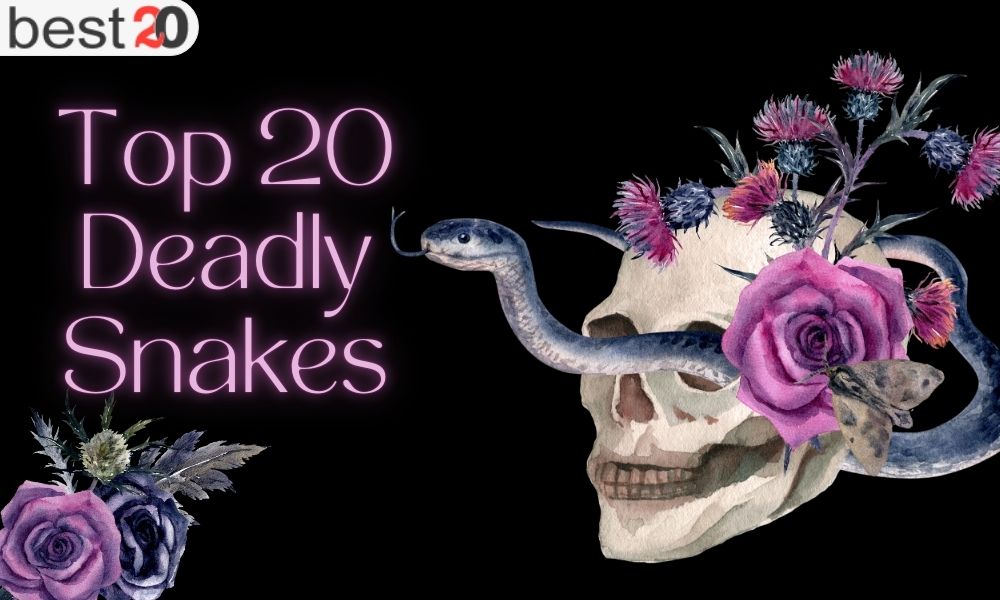Top 20
Top 20 Deadly Snakes In India
Snakes play a significant role in the rich biodiversity of India. India is home to more than 300 different species of snakes more than 60 of which are poisonous. India is home to some of the world’s most venomous snakes such as the Russell’s viper, Indian krait, and king cobra.
As an aside because of its long history and custom of a snake charmer India was frequently referred to as a “snake charmer country”. A snake charmer appears to hypnotize a snake through the playing of a musical instrument in the performance art form known as snake charming. Now let’s look at the list of India’s top 20 most dangerous snakes.
Some of the Deadly Snakes in India
Here we are going to discuss poisonous snakes in India:
1. King Cobra

The worlds longest poisonous snake is the king cobra. Its maximum length is eighteen feet. It can be found all over India in bamboo clusters, chilly marshes, dense jungles, and rainforests. Due to their extreme carnivorous nature they even feed on other snakes such as tiny pythons, cobras, kraits, and the non venomous rat snake. Poison from king cobras is neurotoxic. A king cobra bite can result in death, respiratory failure, and paralysis. In thirty minutes they can kill a human (without antivenom). One should head straight to the closest hospital.
2. Indian Cobra

One of the most well known and feared snakes in the world is the Indian cobra. India is home to a variety of cobra species but this one is the most common cause of snakebite incidents there. Indian cobras can reach a length of six feet, making them rather large snakes. Their characteristic hood which flares in response to danger makes them immediately identifiable. As a neurotoxic the venom of Indian cobras targets the neurological system. An Indian cobra bite can result in death, respiratory failure, and paralysis. Without antivenom a person can be killed by a snake bite in two hours. One should head straight to the closest hospital.
3. Indian Krait
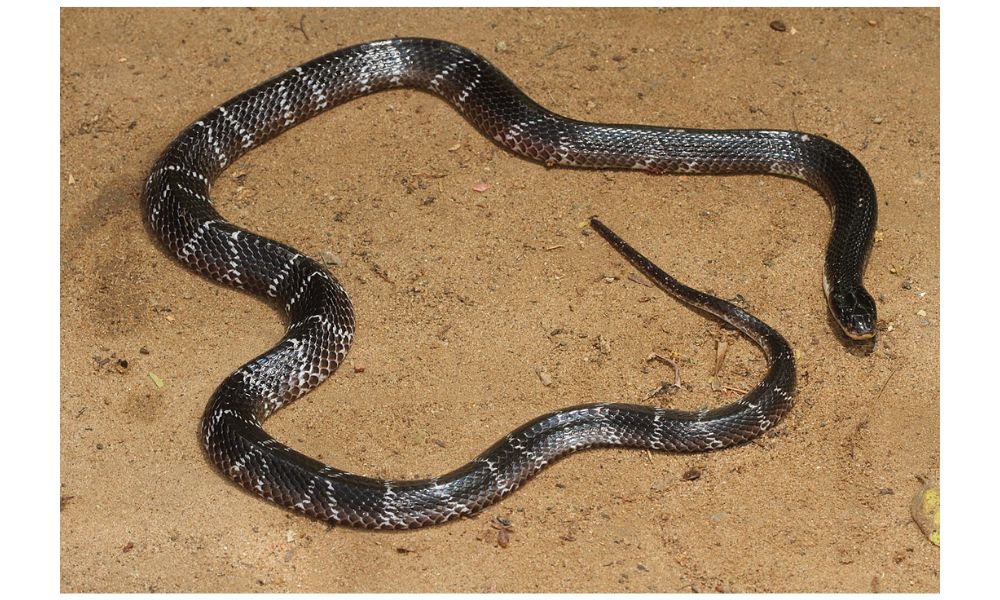
The very venomous Indian Krait also known as the Common Krait, is another snake that lives throughout India. The worlds krait snake population consists of 12 species and 5 subspecies. In forty-five minutes they can murder a human. With a maximum length of three feet common kraits are very small snakes. Their color is usually dark or black, with lighter crossbands. The venom of common krait is also neurotoxic. Common krait bites can result in respiratory failure, paralysis, and even death.
4. Russell’s Viper
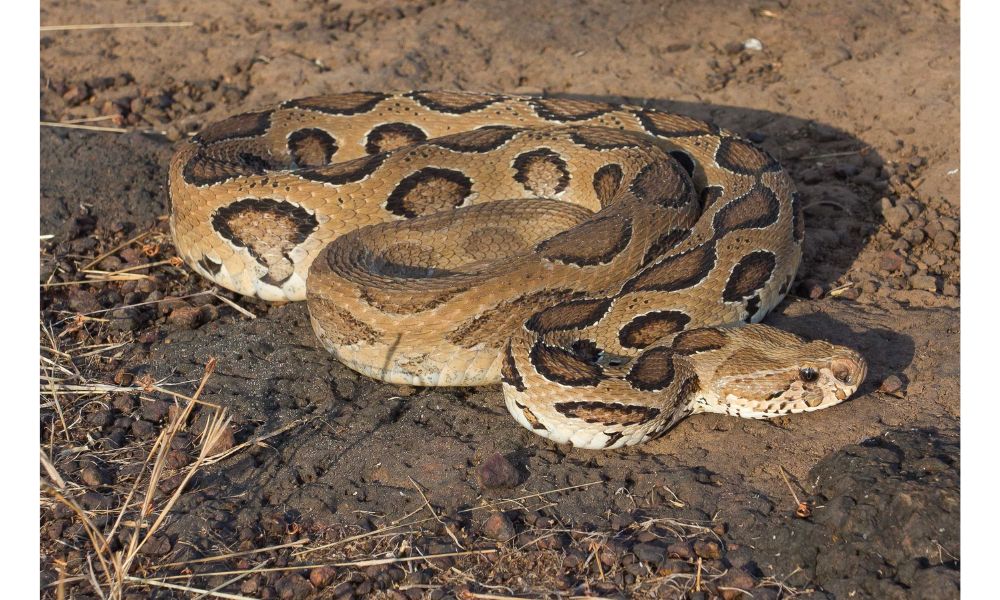
In India the Russell’s viper is among the most common and dangerous snakes. Before attacking or biting this poisonous snake produces a sizzling noise. Without antivenom, a human can be killed by their bite in 45 minutes. Since they are night and frequently discovered inside vehicles or camping gear, Russell’s vipers are extremely deadly. With a maximum length of six feet, Russell’s vipers are comparatively large snakes. Their color is usually dark or black, with lighter crossbands. Because Russell’s viper venom is a hemotoxin it causes tissue and blood cell destruction. Severe agony, edema, and bleeding can result from a Russell’s viper bite. Additionally it may result in death or organ damage.
5. Saw-scaled Viper

Among the snakes with the highest venom in the world is the saw-scaled viper. “Little Indian viper” is the common name for it. Sandy places, rocky environments, soft soil, and scrublands are home to saw-scaled vipers. They feed on frogs, lizards, and a variety of arthropods, including scorpions, centipedes, and big insects. With a maximum length of two feet, saw-scaled vipers are very small snakes. They have a zigzag pattern on their backs and are often brown or black in color. Hemotoxin is the venom of saw-scaled vipers. Severe pain, edema, and bleeding can result from a saw scaled viper bite. Additionally, it may result in death or organ damage.
6. Indian Pit Viper

The Indian pit viper is an intriguing and powerful snake that lives throughout the Indian subcontinent. This poisonous reptile belongs to the Crotalinae subfamily and is notable for its peculiar heat-sensing pits, which allow it to detect the body heat of its prey with exceptional accuracy. The Indian pit viper’s triangular shaped head, vertical pupils, and camouflaged coloring which ranges from green to brown allow it to blend in perfectly with the lush forest undergrowth it inhabits. These agile snakes have a potent hemotoxic venom that can damage their victims’ blood clotting abilities making them a major menace to both naive hikers and small animals.
7. Black Krait
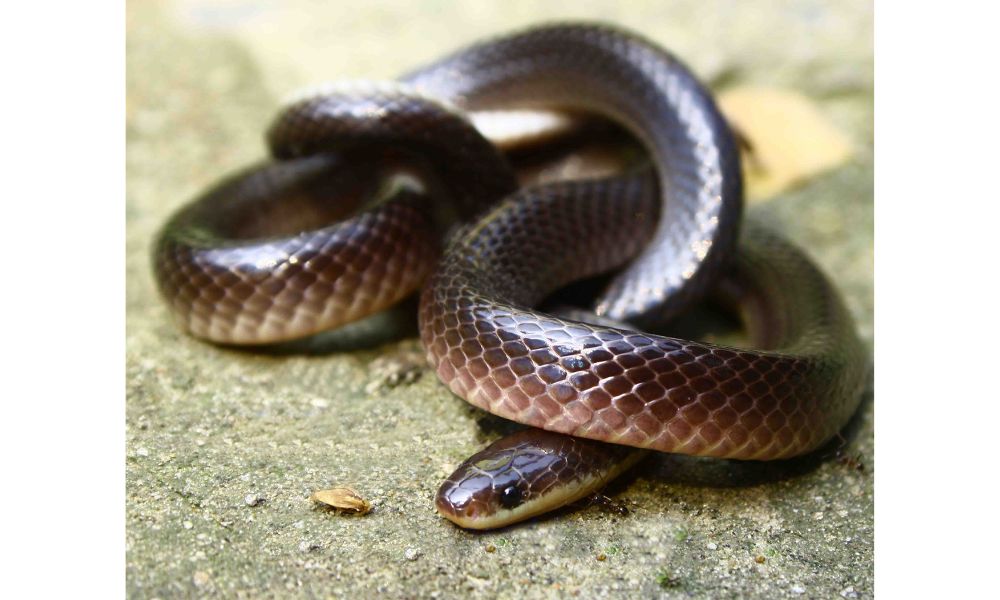
The Black Krait (Bungarus niger) is a poisonous snake native to Southeast Asia, mainly in Thailand, Malaysia, and Myanmar. This species belongs to the Elapidae family, which also includes highly venomous snakes such as cobras and coral snakes. Its venom is neurotoxic damaging the nerve system and potentially leading to paralysis. It contains a variety of neurotoxins that if not treated swiftly can lead to respiratory failure. Bites are uncommon since the Black Krait is typically shy and avoids human contact.
8. Malayan Pit Viper
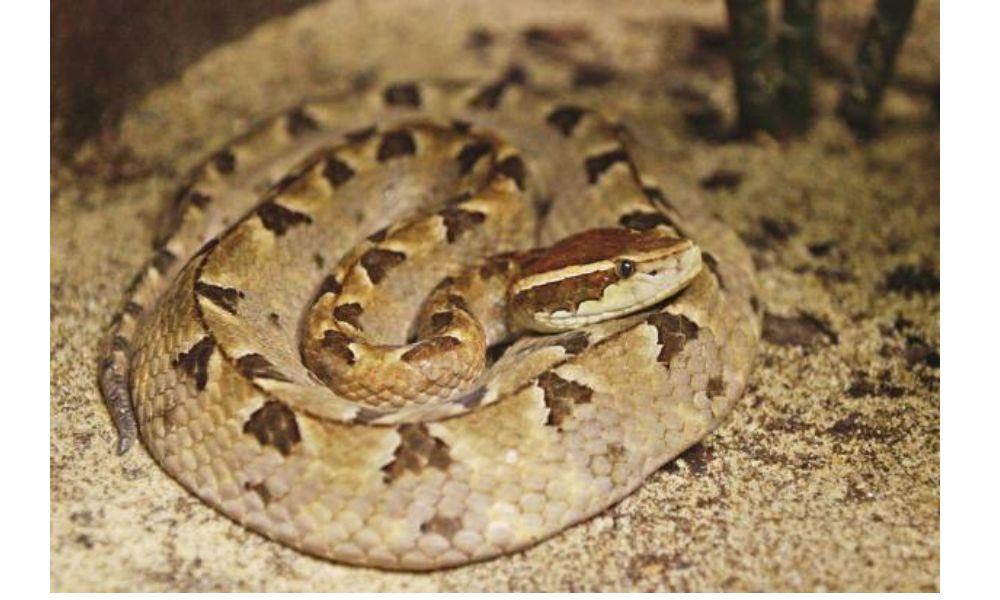
The Malayan Pit Viper is a poisonous snake found in Southeast Asia, including Malaysia, Thailand, and Singapore. It is a member of the Viperidae family and is recognized for its striking appearance and deadly venom. The Malayan Pit Viper’s venom is hemotoxic, which means it predominantly affects the blood and tissues, causing symptoms including pain, swelling, and bleeding. Severe envenomation can produce systemic consequences such as shock and kidney failure, and in extreme situations, it can be fatal if not treated immediately. Antivenom is available in locations where these snakes are common, and if bitten, seek medical assistance immediately.
9. Lesser Black Krait

The Lesser Black Krait is a poisonous snake widespread throughout Southeast Asia. Despite its name, this species is less well known and studied than some other kraits. The Lesser Black Krait is extremely poisonous containing neurotoxic venom that can be deadly to humans. Its venom is mostly used to subdue prey not for defense.
10. Andaman Cobra
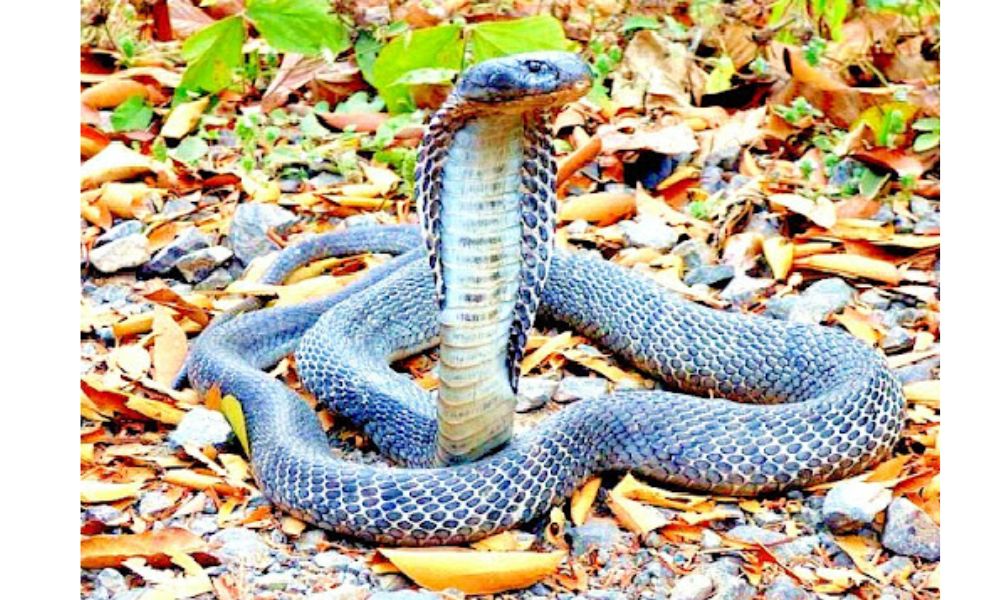
The Andaman Cobra is distinguished by its unique hood which it may enlarge when threatened. Its color varies but it usually has a pale or light brown body with darker patterns. The hood often has a design that resembles an arrow or a spearhead. The Andaman Cobras venom is neurotoxic meaning it can harm the nerve systems of its prey or prospective enemies. Envenomation in humans can produce serious symptoms such as paralysis and breathing difficulties requiring immediate medical intervention.
11. Banded Krait

A poisonous snake that lives along India coast is the banded krait. With a maximum length of three feet it is a comparatively little krait. can be identified with ease thanks to its characteristic black yellowish cross bands. It is primarily submerged and feeds on India coral reefs. It’s common to mistake this poisonous snake for an eel. Venomed banded kraits contain neurotoxins. A banded krait’s bite has the potential to kill, paralyze, and cause respiratory failure.
12. Pit Viper

The bamboo pit viper is a poisonous snake that is mostly found in Southern India mountainous Western Ghats region. Reaching a length of 2.5 feet it grows. It can be found in various types of trees environments including the Indian bamboo, shrubs, and vines. This snake is poisonous and it senses heat. When a warm blooded animal emits infrared radiation the snake senses it and its pit organ signals its brain. After that the brain decodes the signal and aids the snake in locating its target. Hemotoxin is the venom of the bamboo pit viper. A bamboo pit viper bite can result in excruciating agony, edema, and bleeding. It may potentially result in death or harm to organs.
13. Hump-nosed Pit Viper
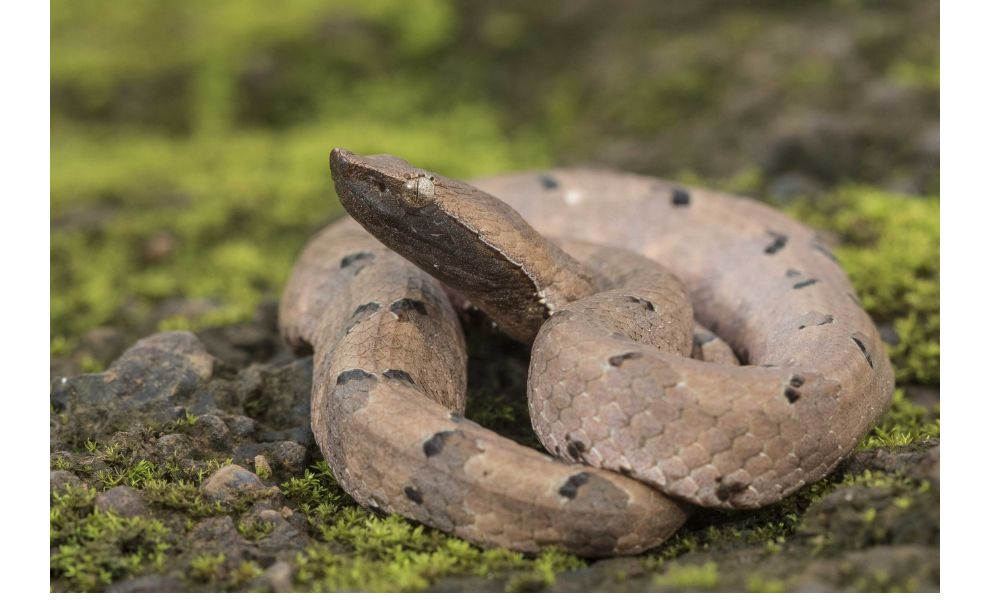
A different kind of pit viper is the hump nosed pit viper. This little poisonous snake is normally active at night and goes hunting early in the morning. In South India’s hilly terrain, dense woods, and coffee plantations lie the little yet deadly hump-nosed pit viper. It can be found in many different types of habitats, including as grasslands, woodlands, and agricultural areas. The characteristic hump on the nostrils of hump-nosed pit vipers gives them a brown or black coloration. Venom from hump nosed pit vipers is toxic to blood. Severe agony, edema, and bleeding can result from a hump nosed pit viper bite. Additionally, it may result in death or organ damage.
14. Many-banded Krait
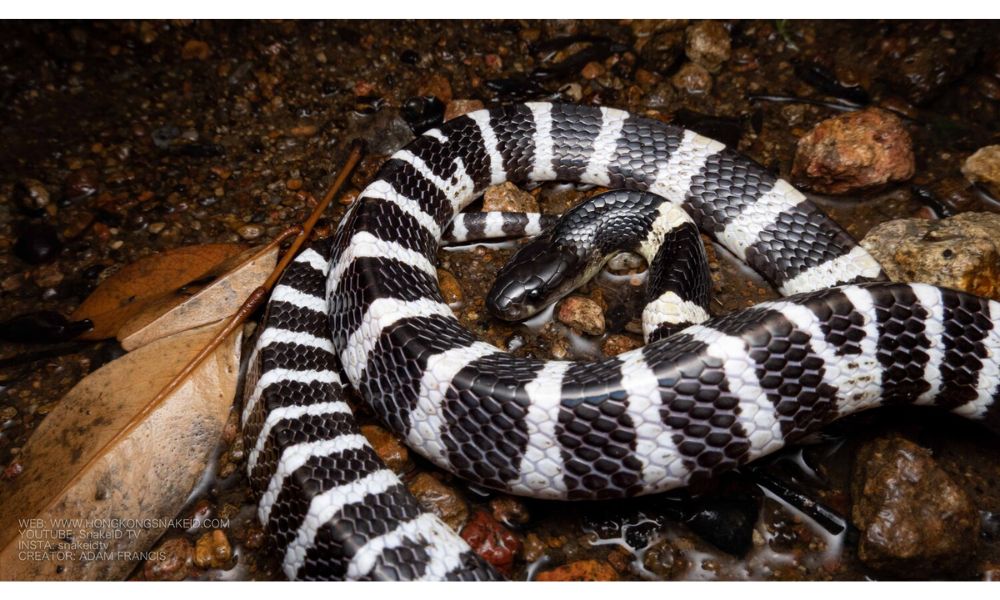
The Many banded Krait is a stunningly attractive but very venomous snake native to Southeast Asia including Thailand, Malaysia, and Indonesia. It is known for its unusual look and very lethal venom. This species has a striking pattern of alternating black and white or yellow bands around its slender body giving it a dramatic and eye-catching appearance. The venom of the Many-banded Krait is extremely neurotoxic damaging the nervous system and potentially causing paralysis. It is regarded as one of the worst snake venoms in the world.
15. Tropical Pit Viper

The phrase “Tropical Pit Viper” refers to various species of the genus Bothrops that live in tropical parts of Central and South America. These pit vipers are well known for their striking look and deadly venom. They play an important role in the environment and are known for their lethal bite. Tropical Pit Viper venom is hemotoxic which means it affects blood and tissue resulting in local discomfort, swelling, and necrosis at the bite site. In severe situations, it can cause systemic complications such as bleeding and kidney failure.
16. Great Horned Viper
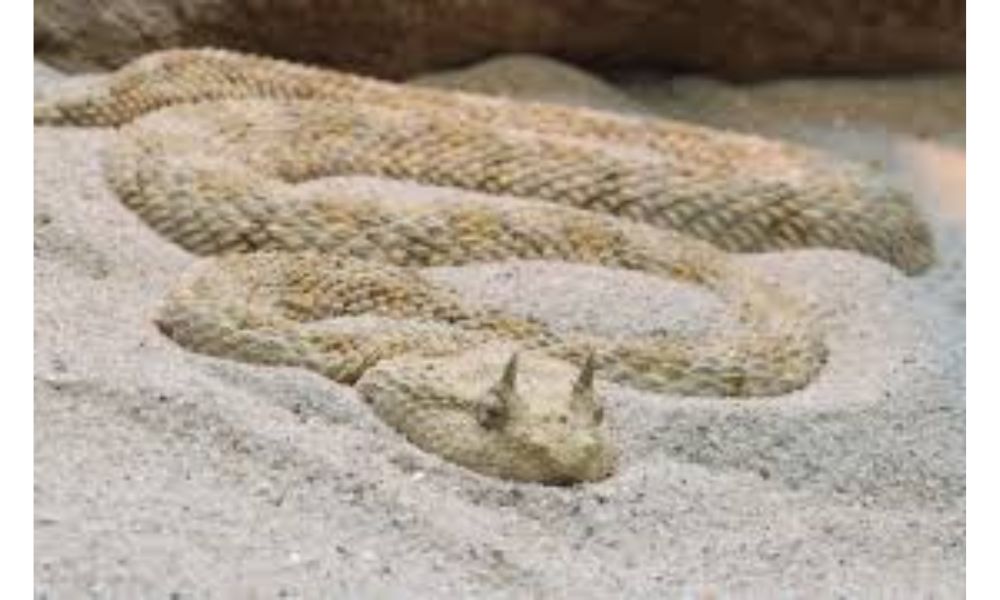
The Great Horned Viper, often known as the Horned Viper, is a distinctive and deadly snake found in southern Europe. It is immediately identifiable by its large horn-like scales and unusual colors. This viper is essential to its ecology but can be deadly to humans due to its strong venom. The venom of the Great Horned Viper is hemotoxic, damaging blood vessels and tissues. It can cause significant pain, edema, and necrosis near the bite site. In severe situations, systemic symptoms like dizziness, nausea, and bleeding may develop.
17. Giant Water Cobra
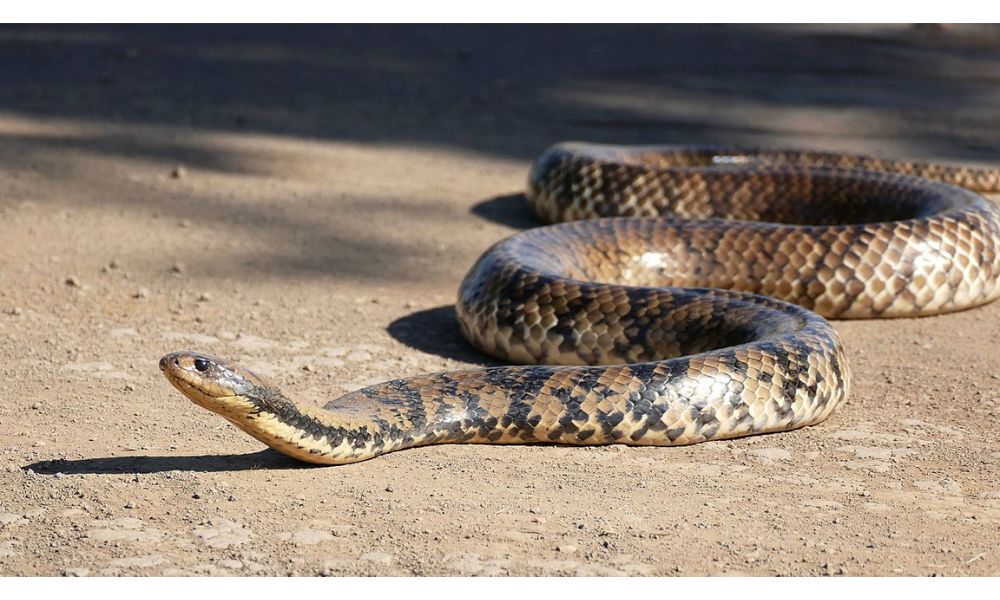
The Giant Water Cobra commonly known as the Banded Water Cobra is a massive and intimidating snake native to West and Central Africa. It belongs to the Elapidae family which also includes venomous snakes such as cobras and kraits. This species stands out for its size, aquatic habits, and remarkable appearance. The venom of the Giant Water Cobra is extremely neurotoxic and cytotoxic. It affects the neurological system, potentially causing paralysis, and can also harm local tissues near the bite site.
18. Green Pit Viper
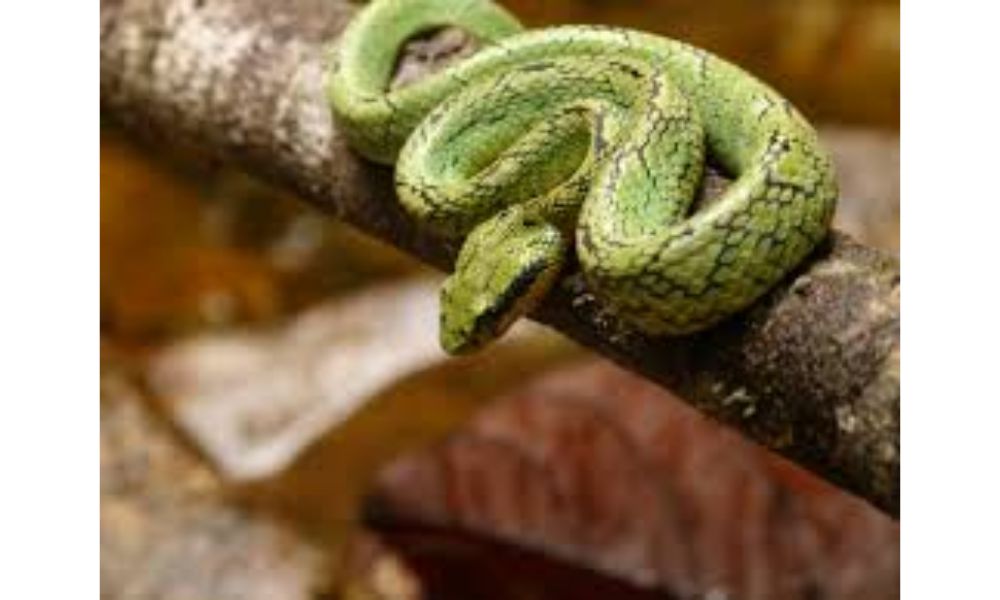
The phrase “Green Pit Viper” is commonly used to describe many species in the Trimeresurus genus, which are distinguished by their brilliant green appearance and heat-sensing pits. These snakes live largely in Southeast Asia and are known for their remarkable appearance and arboreal (tree-dwelling) lifestyle. Green Pit Vipers’ venom is often hemotoxic, damaging blood vessels and tissues. It can cause discomfort, edema, and local tissue necrosis near the bite site. Some species have minor neurotoxic effects.
19. Oriental Whip Snake
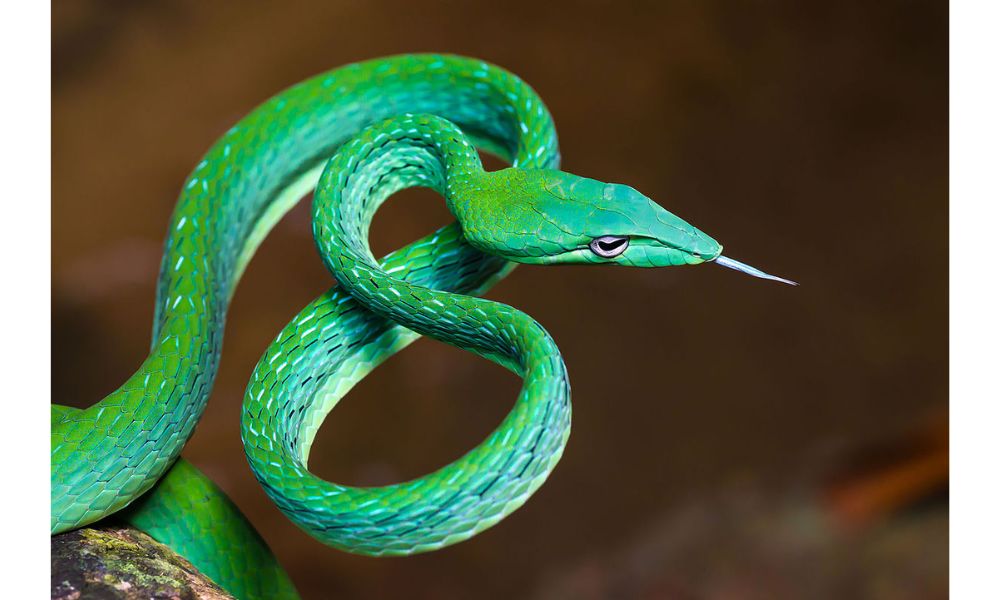
The Oriental Whip Snake, also known as the Green Whip Snake or the Indian Whip Snake, is a stunningly slim and agile snake found in Southeast Asia, including India, Sri Lanka, Thailand and Malaysia. It is known for its distinct look and adaptability to an arboreal lifestyle. The Oriental Whip Snake’s venom is weak compared to other venomous snakes. It is primarily employed to sedate prey, not for defense. The venom is moderately neurotoxic and cytotoxic, however it is generally not harmful to people.
20. Mountain Pit Viper
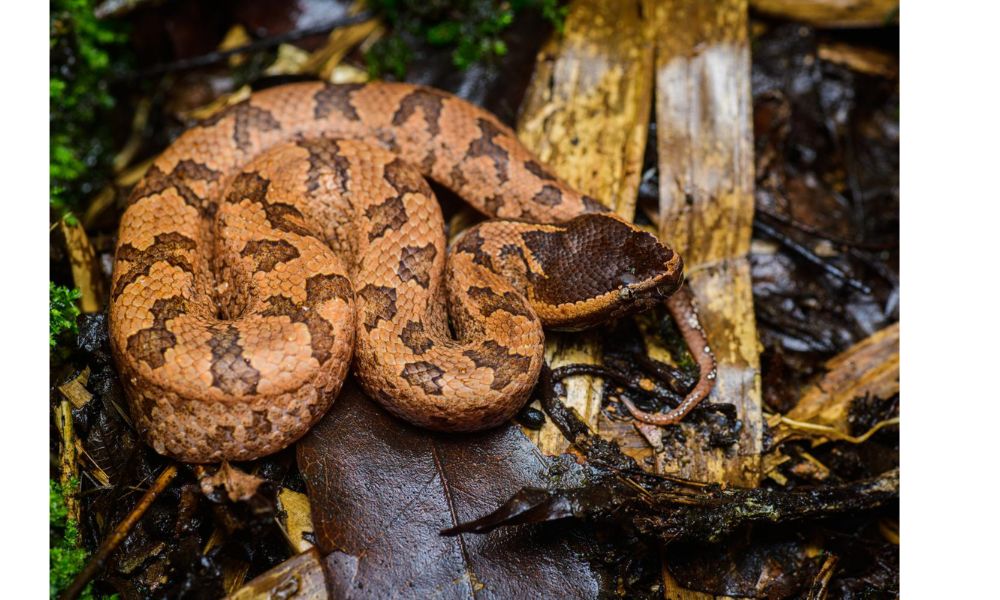
The Mountain Pit Viper commonly known as the Mountain Pit Viper or the Taiwan Pit Viper is a significant species of poisonous pit viper found in Taiwans hilly regions. This snake is notable for its distinctive look and importance in the local ecosystem. The Mountain Pit Viper’s venom is hemotoxic damaging both blood cells and tissues. It may cause discomfort, edema, and necrosis at the bite site. In severe circumstances it can cause systemic symptoms such as bleeding and shock.
Conclusion
India is home to some of the world’s deadly and venomous snakes, with 20 species classified as the most dangerous. These crawling reptiles can be found in a variety of habitats across the subcontinent, from lush jungles to parched deserts, and pose a major threat to both humans and wildlife. At the top of the list is the dangerous Indian cobra, a snake known for its frightening hood display and deadly venom, which can induce paralysis and respiratory failure if not treated.

